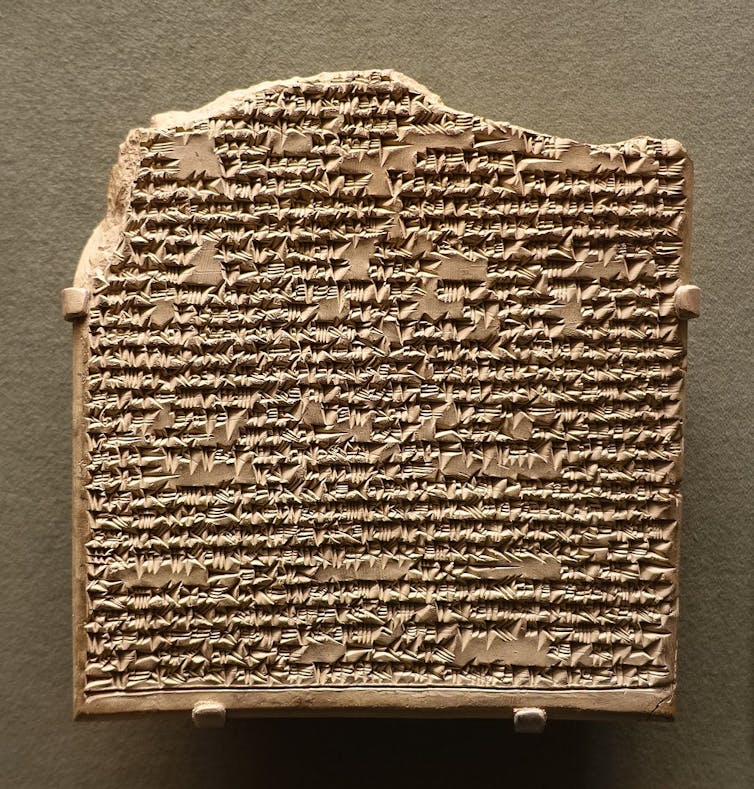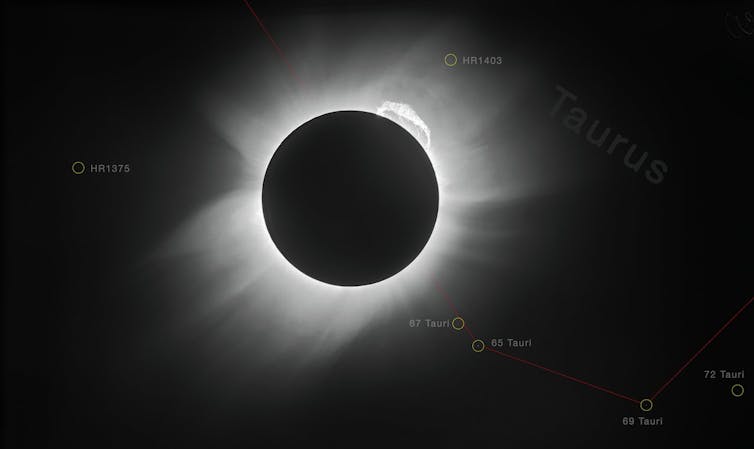Making interesting predictions is one of the hallmarks of successful science. When Albert Einstein formulated his theory of general relativity, an almost immediate test involved the prediction that in a solar eclipse, light from stars that would normally be behind the sun (and thus invisible) would be bent in such a way as to become visible just at the sun’s edges.
In 1919, astronomer Arthur Eddington travelled to the island of Príncipe, off the west coast of Africa, for the solar eclipse, where he managed to observe that exact bending of light. It was a spectacular confirmation.
(ESO/Landessternwarte Heidelberg-Königstuhl/F. W. Dyson, A. S. Eddington, & C. Davidson)
We can frame Einstein’s prediction as a conditional sentence: “If there is an eclipse, the light of certain stars will be observed noticeably bending around the sun.” This then gives us something to check in the sky to see if the prediction is fulfilled. And if the prediction is fulfilled, we have a convincing bit of evidence that the theory is on the right track.
This is why making successful predictions is so often seen to be an important function of our science: it convinces us that we can figure out the world around us effectively.
Future knowledge
We find predictions related to eclipses in all sorts of ancient traditions, but perhaps most prominently in what are known as Mesopotamian omen texts.
Somewhere between three and four thousand years ago in Mesopotamia, now modern-day Iraq, people began recording connections they saw in the world that they thought would allow them to understand how things worked and what might be coming in the future.
These ranged from medical symptoms — “if his temporal blood vessels have collapsed and his eyes are blurred, he will die” — to more esoteric connections — “if there is an eclipse, the king will die.”
In the second case, “if there is an eclipse, the king will die,” there is a pair of connections that we no longer think of as scientifically plausible, if only because the 3,000 years of subsequent history have failed to bear out this connection.
Still, at the time, people took it very seriously, even going to considerable lengths to protect the king by appointing a substitute king who could sit on the throne during the eclipse.
Predicting eclipses
This pairing of eclipses and mortal danger to kings was serious enough that people payed very close attention to eclipses. As the Babylonians and Assyrians collected more and more data on stellar, lunar and planetary phenomena, eclipses came to be significantly better understood — so much so that they became entirely predictable phenomena, with one caveat.
For lunar eclipses, the Earth comes between the sun and moon plunging the moon into shadow — these eclipses are visible for roughly half the planet. These became entirely predictable.
But for solar eclipses, where the moon comes between the sun and the Earth, only a few places can see any given solar eclipse. And so it was much harder to predict the location on Earth from which a solar eclipse would be visible.
Babylonians could predict when someone would see a solar eclipse, but they just couldn’t know who and where exactly. These predictions are what historians now call “eclipse possibilities.”

(Daderot/Wikimedia Commons)
Ancient astronomy
The Mesopotamians’ initial framework for eclipse prediction used what is called the Saros cycle: for a given eclipse, there will be a near-identical one (in magnitude, direction and timing) happening almost exactly eighteen years, eleven days and eight hours later. There will be another one eighteen years, eleven days and eight hours after that, and so one. Due to tiny inaccuracies, this system eventually degrades, but only after a sufficient number of repetitions, at which point it can be reset.
Building on this, Babylonian astronomers went on to develop even more sophisticated tables for predicting eclipses and eclipse possibilities. They further expanded their ability to predict heavenly phenomena to the point that their knowledge of lunar, solar and even planetary motions became legendary.
Their predictive methods and their observational records travelled as far as ancient Greece, Rome and India and provided the foundation for the powerful development of astronomy in those countries.
The rest, we might say, is history. But insofar as successful prediction is one of the gold standards of modern science, it all begins with a deep concern — and a predictive control — over eclipses.




